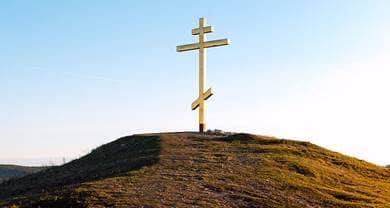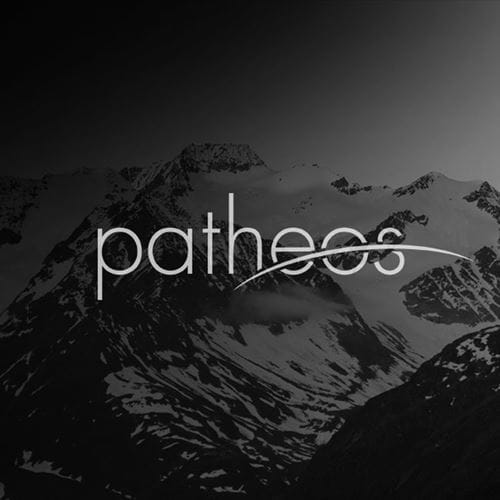- Trending:
- Forgiveness
- |
- Resurrection
- |
- Joy
- |
- Feminism
- |
- Afterlife

RELIGION LIBRARY
Eastern Orthodoxy
Early Developments
The earliest years of Christian historical development are shared by all the Christian traditions. The 3rd to 5th centuries witnessed the lively engagement of scholarly Christians with the new faith, and the growth and spread of monasticism. Both of these trends had significant influence on the beliefs and practices of Christianity. This article introduces the personalities that had the greatest impact on Eastern Orthodoxy, and outlines the influence of the monasteries on the eastern churches.
The first few centuries of the new faith were a very creative period of Christian writing and theological speculation. After Constantine's Edict of Milan brought to an end the official persecution of Christians, some of the best intellectual minds of the Roman Empire turned their talents to writing a dazzling number of volumes on questions of philosophy, theology, and the social and political implications of the new religion. This was the beginning of the age of the Church Fathers, also called the Patristic Age. Greek philosophical and theological writings, typical of the eastern Roman Empire, were distinctively speculative, asking questions about the nature of the Trinity, the Incarnation, and the meaning of the scriptures. Alongside the more speculative writings on philosophy and theology, the eastern Church Fathers also wrote volumes of poetry and mysticism.
Of the many Church Fathers, Eastern Christianity especially reveres Athanasius of Alexandria (c. 298-373), Basil of Caesarea (c. 329-379), his friend Gregory of Nazianzus (c. 329-391), Basil's younger brother Gregory of Nyssa (c. 335-c. 395), and John Chrysostom (c. 354-407). These priests and teachers are all venerated as saints, as are many of the other Church Fathers. John Chrysostom, Basil of Caesarea, and Gregory of Nazianzus are honored as the "three great hierarchs," or three great priests, and Eastern Orthodox Christianity celebrates a feast day for them on January 30. These Fathers of the Church are venerated for their multiple achievements, including their outstanding contributions to the development and dissemination of the doctrine of the Trinity.
Athanasius of Alexandria, also known as St. Athanasius the Great, was the Bishop of Alexandria (in modern-day Egypt). Along with his role in defining the New Testament canon, Athanasius was a strong defender of the concept of Christ's full divinity, and played a significant role in a doctrinal debate that started with Arius (c. 250-336), a priest from Alexandria. Arius maintained that Jesus was God's first creation, and therefore was not "coeternal" with God the Father, an idea known as Arianism. Many theologians and church leaders agreed with Arius, but others did not, and the Arian controversy seriously divided the church. Constantine convened the first ecumenical council at Nicaea in order to settle the antagonism over Arianism. Athanasius was the most influential opponent of Arianism, and contributed a critical term in the Nicene Creed, which professes that Christ is "of one substance" or "one in essence" with God the Father. In other words, Christ's divinity is in no way separate or distinct from God. In this way, Athanasius helped establish the essential monotheistic intent of the doctrine of the Trinity.
Basil of Caesarea, also known as St. Basil the Great, was Bishop of Caesarea, located in a region then called Cappadocia, in modern-day Turkey. His friend Gregory of Nazianzus, also known as St. Gregory the Theologian, was an archbishop in Constantinople. Basil the Great's younger brother, St. Gregory of Nyssa, was Bishop of Nyssa, also in Cappadocia. Together these three friends are remembered as the Cappadocian Fathers, revered for their development and defense of the doctrine of the Trinity. Building on the work of Athanasius, the Cappadocian Fathers articulated and defended the classical thesis about the Trinity, which states that Father, Son, and Holy Spirit are each members of a single divine union, "three persons in one essence." St. John Chrysostom, Bishop of Constantinople, was a famously eloquent preacher; chrysostomos means "golden-mouthed." He interpreted the speculative doctrine of the Trinity in accessible terms and popularized it with the laity.
Basil the Great is also regarded as the founder of communal monasticism. The earliest monks were extreme ascetics who practiced what is called eremitic monasticism, or the life of the hermit. The ascetics displayed a tendency toward acts of extreme self-denial, in an effort to share in Christ's passion. These monks were venerated, sometimes passionately, by other Christians.
Basil also spent time as a hermit monk, but after a time emerged from isolation and implemented a new form of monasticism, called cenobitic or communal monasticism. Basil reasoned that a Christian could effectively discipline the body and reject the world through constant physical and spiritual labor, rather than isolation and severe self-denial. In his method, communal labor replaced the extreme asceticism of the hermit monks, and communal monasticism gradually replaced the life of the hermit. Basil's model became the early pattern for both eastern and western monasticism.
Eastern Orthodox monks and nuns take vows like their western counterparts. They provide hospitality and charity, and some have been important missionaries, such as the 9th-century brothers Cyril and Methodius, credited with creating the Cyrillic alphabet. The main role of Eastern Orthodox monks and nuns, however, is prayer. The monasteries conduct the cycle of the Divine Office day by day, without interruption, and are seen as the keepers and guardians of the Divine Liturgy. This is held to be a deeply significant service, as it keeps the world in God's presence.
Study Questions:
1. Why are the early developments of Eastern Orthodoxy shared across all Christian traditions?
2. What was the Patristic Age?
3. How did St. Athanasius the Great shape the scriptures of Christianity?
4. Who were the Cappadocian Fathers? What was their significant contribution to theology?
5. How was the Eastern Orthodox monastic order formed?










